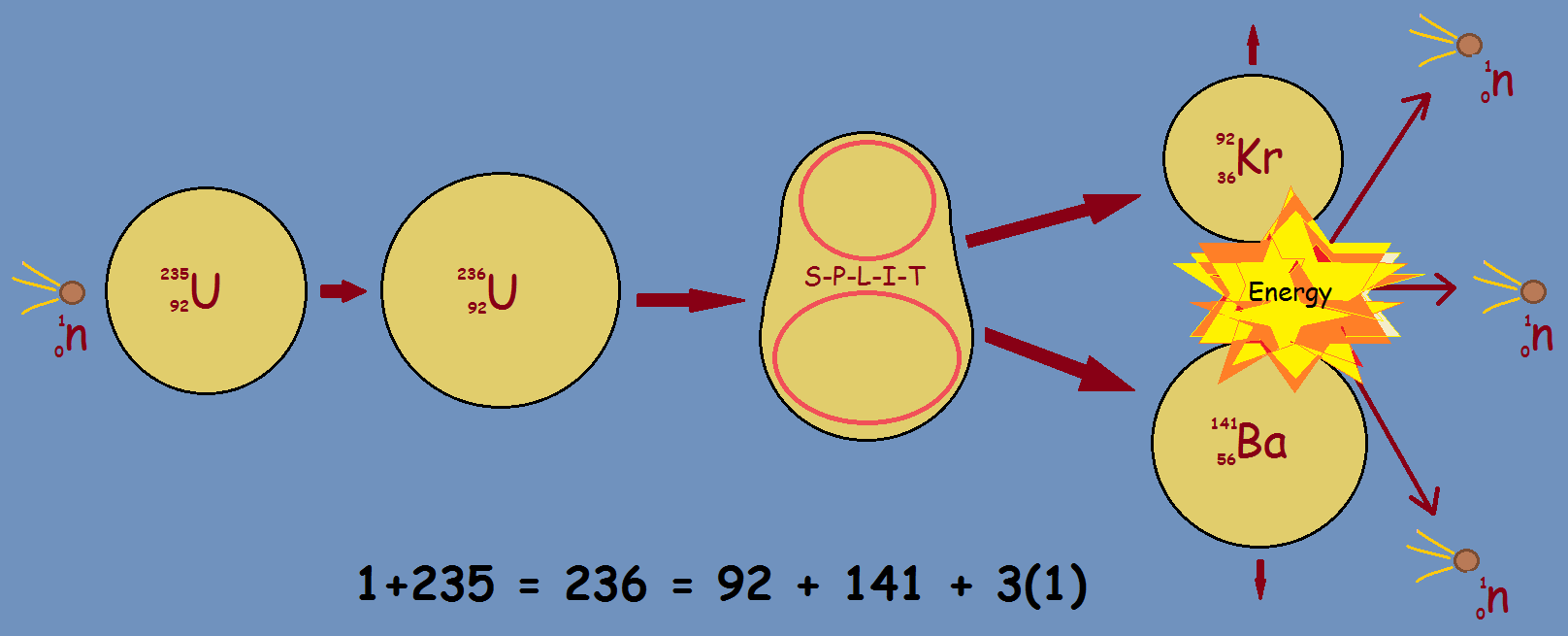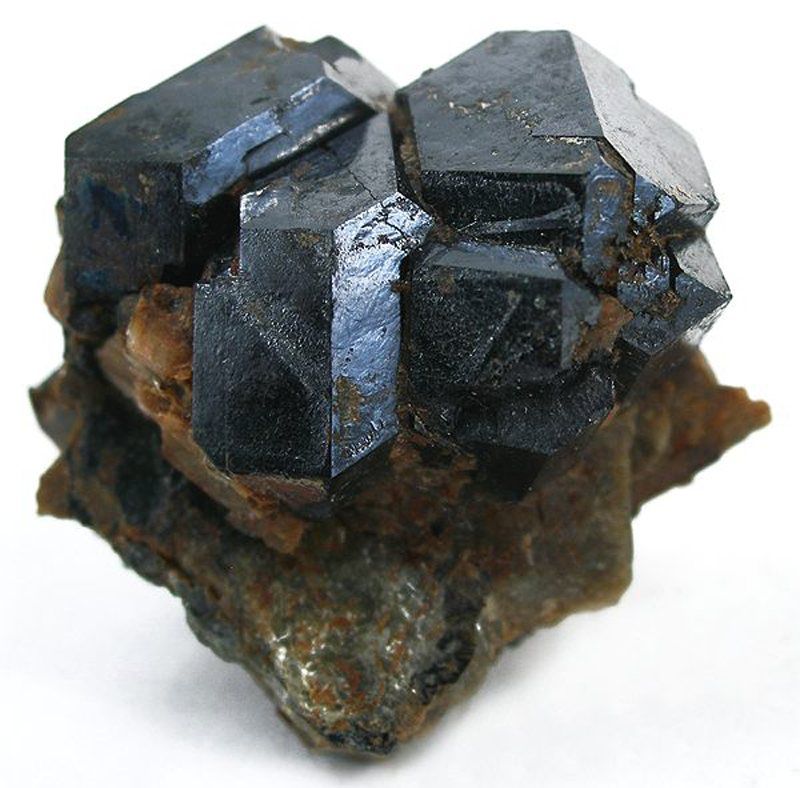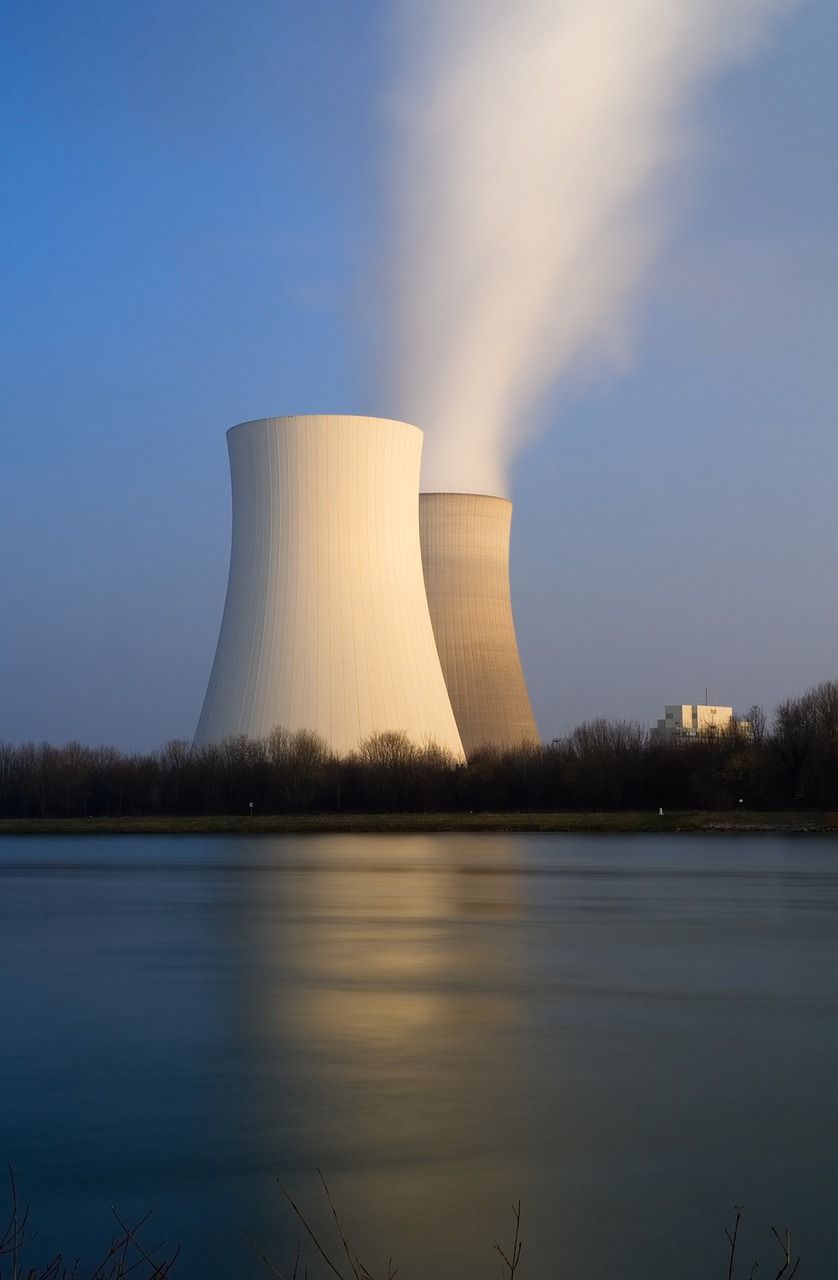
What is critical mass? Before we answer that question, we want to discuss the topic of fission, itself. When we speak of atomic bombs, we do not usually mean hydrogen bombs or fusion bombs in which the nuclei of hydrogen atoms fuse together.¹ Rather, we mean fission bombs, in which large atoms of radioactive (unstable) elements are torn apart to produce smaller atoms with the release tremendous energy. One simple atomic explosion reaction is written,
1 n + 235U → [236U] → 92Kr + 141Ba + 3 n
The above equation informs us that one energetic neutron properly striking an atom of uranium, isotope 235, produces, first and temporarily, an ordinarily stable atom of uranium, isotope 236.

By Rob Lavinsky, iRocks.com – CC-BY-SA-3
However, the 236 isotope of uranium is not entirely stable, and the kinetic energy provided by a fast-moving neutron, combined with the energy within the nucleus itself, puts the total energy in the nucleus “over the top” so that the atom of 236U splits into the lighter elements written above, namely krypton gas and barium metal.
The decay in producing these elements, does not balance without the release of three neutrons and an amazing amount of energy. Since the reaction is initiated with only one neutron, but winds up producing three, there are two high-energy neutrons left to “get into trouble”.
This suggests that, given the correct conditions, a chain reaction can be made to occur. If the quantity of uranium atoms used is sufficiently above a certain critical mass, the end result can be the release of enormous energy in a violent explosion. If the reaction is prevented from surpassing the critical mass level, the energy can be put to practical use, instead of destructive use.
This All Sounds Convincing But…
Can one achieve a chain reaction from a chunk of ordinary uranium metal, the mixture of isotopes as it occurs in nature, with its tiny fraction of a percent of 235U in its makeup?
The answer is, no. The 235 isotope needs to be isolated and enough gathered to reach critical mass. What is critical mass? A very simple online definition reads: the minimum amount of fissile material needed to maintain a nuclear chain reaction.
Notice critical mass is required to maintain a fission chain reaction. In fact, at least for the production of an atomic weapons, supercritical mass, that is an amount of mass over critical mass, must be achieved.

Just How Much is Critical Mass?
In order to keep the fission reaction going, at least one of the three neutrons is required to initiate the next reaction sequence if a chain is to begin. Up to two of the three neutrons produced by each fission reaction may be “wasted”, not more, if one is to establish a chain.
There are a number of parameters or factors that determine precisely what critical mass is for any given fissionable (fissile) material. Among them are the shape of the mass and its density. The more spherical the shape and the greater the density, the better. A neutron-reflective shield that surrounds the mass lessens the quantity of required material. There are other manipulative factors that help minimize the required mass.
If the bare minimum of critical mass is achieved, after some of the fissionable “fuel” is used up, the critical mass then becomes a subcritical mass. Some fission continues, but fades. On the other hand, an amount of material greater than critical mass is said to be a supercritical mass. This enables initiation of fusion, but also allows the sustaining of a chain reaction.
Note: You might also enjoy Total Energy in One Hydrogen Atom

From what I’ve read elsewhere when Fermi (et al) initiated the first nuclear chain reaction at Chicago University (as part of the Manhattan Project) there was some uncertainty as to what would actually happen. Apparently there was one theory that the chain reaction would spread beyond the experiment and consume the entire world! Considering the subsequent proliferation of nuclear weapons and the possibility of the annihilation of all life on Earth maybe it would have better not to proceed at all.
Your notion is the very same one I’ve heard. There was question as to whether the entire earth might become part of the chain reaction, killing all life. But I also heard President Truman was willing to take the risk. If that is true, what does that tell you? The most obvious place to look for energy, if it comes down to the atom and the sun, is the sun.
That was big of Truman to assume the responsibility for all of us! I can only assume that the best scientific advice of the time dismissed the ‘destruction of the earth’ theory.
While I don’t agree with the common expression, it suggests we should “assume nothing”.
I think I read something on this many, many years ago, where it was called “tickling the dragon’s tail”, when the initial experimenters did not realize how dangerous what they were doing could be.